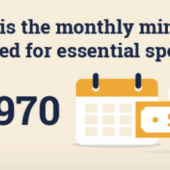by Dana Sitar, CEPF®
Contributor
Filing taxes in the United States could be free and simple for everyone — if only tax prep companies weren’t lobbying to keep it so complicated.
The Internal Revenue Service and your state tax collectors already have access to most of the information you painstakingly report in a tax return, because your employers and banks are required to provide it.
We could, in theory, have a return-free system, where the IRS sends you that information and how much it believes you owe, and you don’t have to file anything unless you disagree with it.
But we like a challenge, don’t we?
Instead of this straightforward public service, we have the next best thing: A private system that helps the majority of Americans file a federal tax return for free.
Except most of us don’t use it … because we don’t know it exists.
The Free File Alliance is a public-private partnership between a group of tax software companies and the IRS. Eight companies are part of this agreement as of January 2022, according to its recent press release.
The agreement says these companies have to provide the majority of Americans with a free way to prepare and file their taxes online. It also bars the IRS from providing its own free filing system — like that dreamy no-return scenario I mentioned above.
The problem, predictably, is that no one advertises the free services.
The government has no budget to market it, and the for-profit tax preparers have no incentive to let you know about their free options — and every incentive to funnel you toward a paid option. And they use every opportunity, as ProPublica has reported repeatedly.
The result is that most filers have no idea the option exists, and hardly anyone takes advantage of it.
(BTW, we are happy to tell you all about those free tax filing services.)
In 2020, the Alliance touted “soaring” participation — a 28% “jump” from 2.3 million filers in 2019 to 2.9 million in 2020. Sounds great, except more than 130 million taxpayers qualified for free filing through the program. That’s a participation rate of less than 2% of eligible filers.
This part is, in fact, easy. Once you know about it.
To qualify, you have to earn below a certain income limit, which changes each year.
For tax year 2021 (what you’ll file starting in 2022), anyone with an adjusted gross income below $73,000 qualifies for free filing through an IRS partner.
The most popular services, TurboTax and H&R Block, have left the Alliance in recent years, and this year’s participating companies are a collection of mostly lesser-known online tax preparers:
Choose a filing service through the IRS browsing tool to make sure you access the actually-free versions of these services and avoid upsells to paid services. It’ll ask you some questions to help you determine which service is a good fit for your tax situation.
Before you choose a service, read through the requirements for free filing. Some of them cap incomes as low as $39,000, or tack on an age requirement or state limitations. A few, but not many, throw in free state filing so you can avoid that surprise charge at the end of the process.
Most importantly: Assume you can find a way to file for free. The agreement aims to make free filing available to 70% of Americans, so the odds are in your favor.
Tax companies will make plenty of offers that tempt you to upgrade to a paid option — or make you believe you have no choice. But you do. They’ve barred our government from offering us that choice, and in return, they’re required to provide it themselves.
We just have to make sure we can find it.
Here are our answers to some common questions about the Free File Alliance.
Dana Sitar (@danasitar) has been writing and editing since 2011, covering personal finance, careers and digital media. She was ticked off she didn’t know about the Free File Alliance and wants to make sure you don’t face the same fate.
Ready to stop worrying about money?
Get the Penny Hoarder Daily
Privacy Policy
© 2022 The Penny Hoarder. – All rights reserved.
Privacy Policy and Terms of Service | Do Not Sell My Personal Information | Cookies Settings






